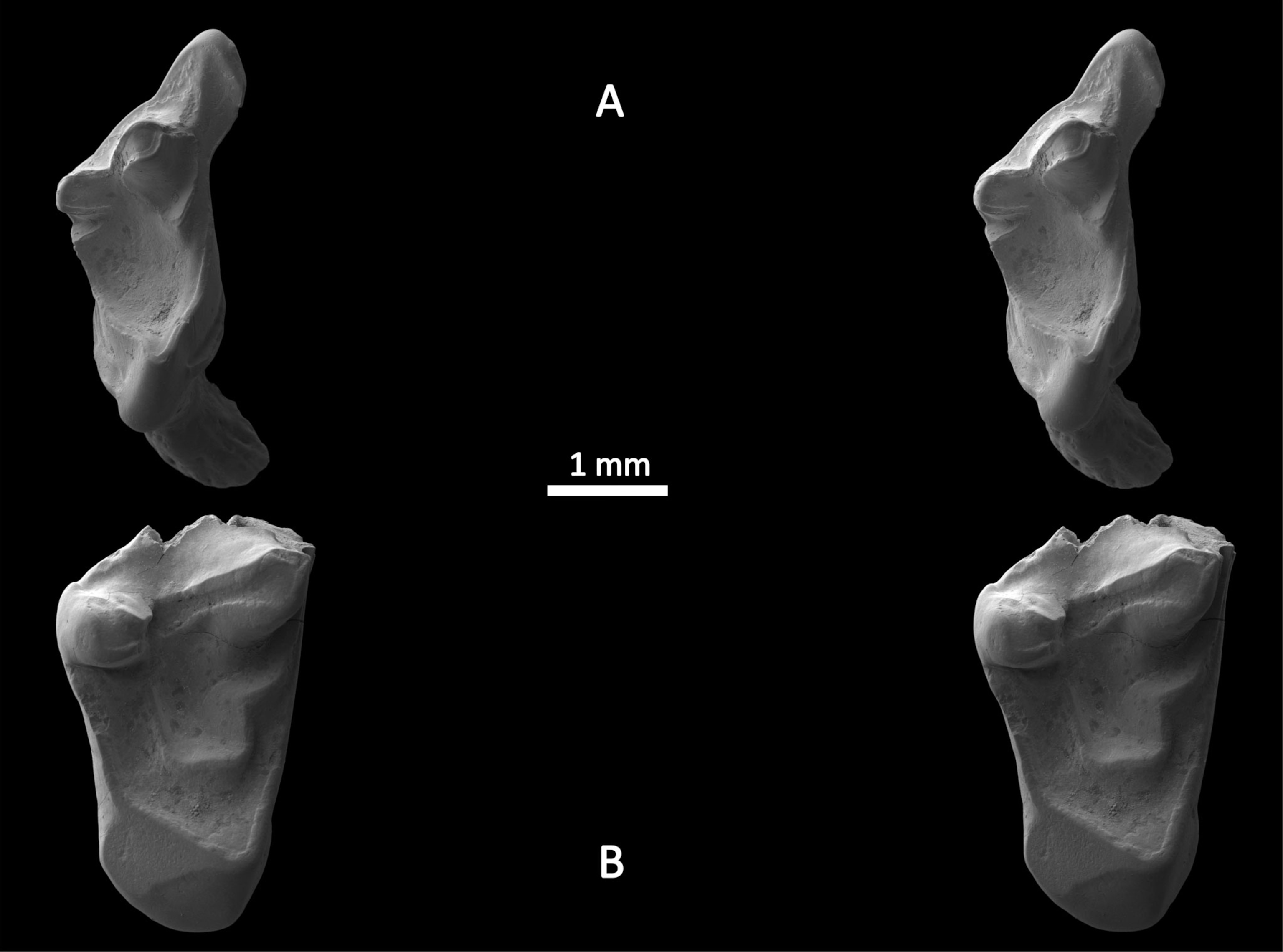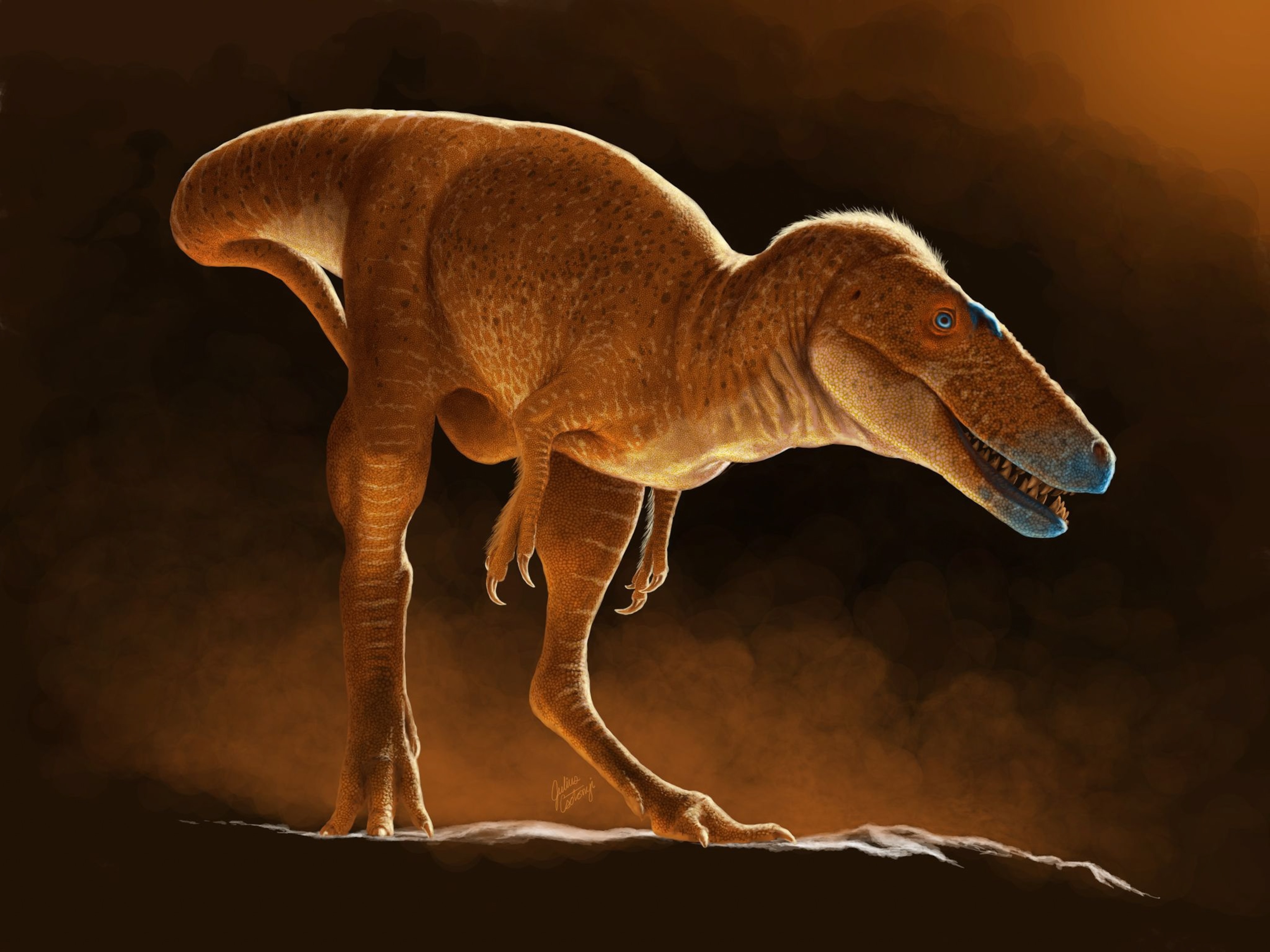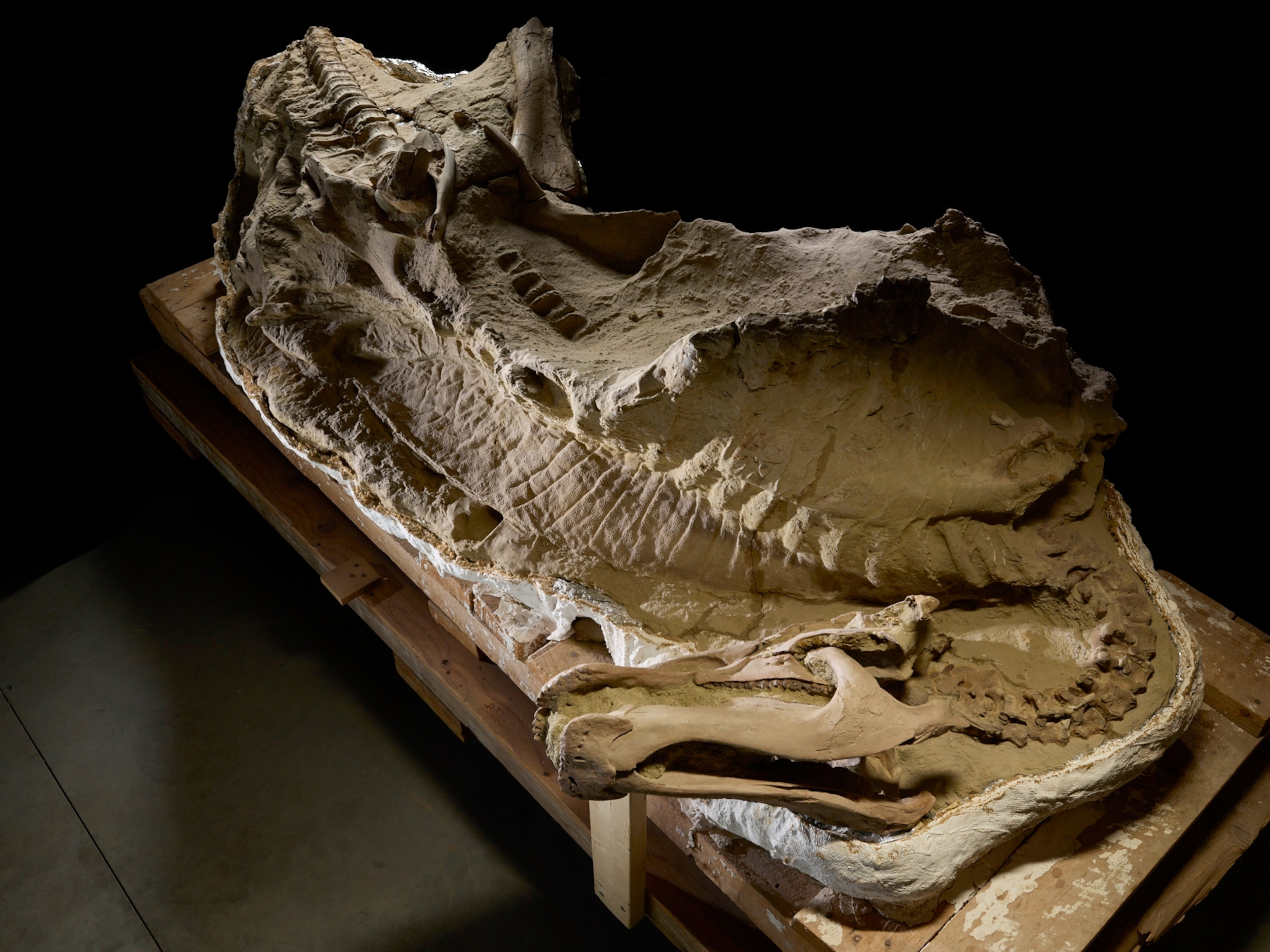
Fossils of Some of Our Oldest Mammal Ancestors Found
Tiny teeth found in England belonged to the earliest known eutherian mammals—the group that includes dogs, elephants, and humans.
Two ancient teeth found in southern England are some of the oldest known fossils from the group of mammals that gave rise to humans. The teeth likely belonged to ancient creatures that nibbled on insects and went out only at night—a life strategy that let them avoid the dinosaurs that dominated Earth during the Cretaceous.
The teeth represent two newfound species of early mammal, both of which vaguely resembled small shrews. The smaller animal, named Durlstotherium, in all likelihood ate insects almost exclusively. The larger one, named Durlstodon, may have had hefty enough teeth for processing plant material, but researchers can’t be certain.
Grant Smith, then an undergraduate student at the University of Portsmouth, found the teeth in the summer of 2015, when he carefully sieved through 130 pounds of rock he had picked up along the Dorset beach. He and his advisor David Martill suspected that the teeth were mammalian. But to be sure, they summoned Steve Sweetman, a mammal-tooth specialist, to have a look.
According to his analysis, the teeth are roughly 145 million years old, the age of the rock formation in which they were found, and they’re dead ringers for eutherian mammals. This group includes today’s placental mammals—such as dogs, elephants, and humans—and their now-extinct kin.
“It was a jaw-dropping moment; I was shocked,” says Sweetman, a research fellow at the University of Portsmouth. “These were the sorts of things you’d expect to see in the Upper Cretaceous, not way down in the base of the Cretaceous.”

The timing of the first eutherians has been a matter of debate. Based on fossil and genetic evidence, some paleontologists suggest that they’ve been around since at least the late Jurassic, about 160 million years ago, while some studies imply that they may have arisen later.
If this analysis holds, the new fossils, unveiled this week in Acta Palaeontologica Polonica, hold the record for the oldest eutherian remains ever found in Europe, adding a crucial piece of hard evidence to the debate. (The oldest eutherian known today, a Chinese fossil called Juramaia, is about 15 million years older, but some researchers argue that it’s not a eutherian.)
“There may well be eutherians coming from other parts of the world from older rocks,” says Sweetman. “We’d expect there to be; we just haven’t found them yet.”
Seeing the Light
Based on skull measurements gleaned from related species, Sweetman thinks these early mammals were probably nocturnal—an interpretation that got an unexpected boost on Monday, when a separate study confirmed that early mammals didn’t venture into the sun until dinosaurs were on their way out.
Researchers have long suspected that early mammals were nocturnal. Most mammals have worse color vision than reptiles or birds, and mammals’ eye shapes and retinas suggest that their distant ancestors were adapted for night vision.
Why? Blame the dinosaurs. One longstanding hypothesis holds that early mammals had a nocturnal lifestyle, which kept mammals out of dinosaurs’ way, ecologically speaking. Once the dinosaurs died out, however, mammals could safely become more active during the day.
Evidence for this “nocturnal bottleneck” has built up through the years, says Roi Maor, a Ph.D. student at Tel Aviv University and University College London. And Maor’s new study, published Monday in Nature Ecology & Evolution, adds to that assessment.
Maor peered into the behaviors of long-dead mammals by building a massive dataset of the day-night habits for 2,415 living mammal species. He then mathematically estimated the habits of ever more distant common ancestors, until he arrived at the most recent common ancestor for all mammals.
This ancestral mammal lived either 166 or 218 million years ago, depending on the model, and came out as nocturnal, along with many of its descendants. This means that mammals were probably nocturnal through most of the age of dinosaurs.
This changed, however, once the nonavian dinosaurs bit the dust 66 million years ago. In one model, mammals picked up daytime activity about nine million years before the dinosaurs went extinct; in the other, they started to see sunlight just after the extinction.
“We were surprised to find such a tight fit between theory and our actual findings,” says Maor.




